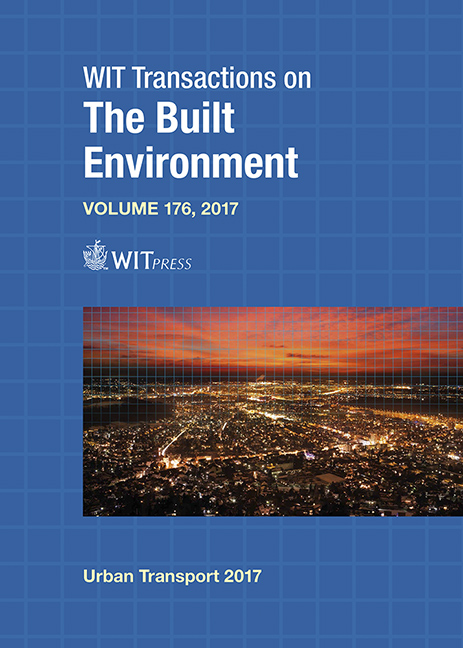COMPARISON OF HSR LINES IN TURKEY AND THE WORLD AND THEIR SPATIAL IMPACT: A CASE STUDY OF THE ANKARA–KONYA HSR LINE
Price
Free (open access)
Transaction
Volume
176
Pages
12
Page Range
547 - 558
Published
2017
Size
593 kb
Paper DOI
10.2495/UT170471
Copyright
WIT Press
Author(s)
AHMET BAŞ, MEHMET ALI YÜZER
Abstract
High-speed train services have been implemented in many different countries of the world since it was first introduced in Japan in 1964. High Speed Railways (HSRs) are it extremely attractive for countries due to rapid travel with high speeds among long-distance settlements. HSR investments have increased in recent years in Turkey after the determination of HSR developments as a national policy by the Turkish Government. 888 km HSR lines were constructed between Ankara-Eskişehir, Ankara-Konya and Ankara-Istanbul from 2002 to 2014.The aim of this study is to find out how HSR lines effect the distribution of population, labour capacity, time efficiency as well as urban sprawl in the Ankara-Konya region. To explore the impact of HSR lines, a new model is developed to satisfy the former goals, model computes the data not only from the statistical part also estimation of the future activity distributions. Basically, there are two main components in the developed model. First is to calculate the accessibility of HSR in the region. The second to figure out HSR’s spatial impact in the city. A utility function has been composed and interviews have been conducted with HSR passengers. Besides, public transport system also examined in terms of accessibility in the second part of the model. In addition, the study reveals the socio-economic and spatial effects of HSR lines to Ankara-Konya region, which is the first implemented line as a new one in Turkey.
Keywords
high speed train, accessibility, spatial impact





